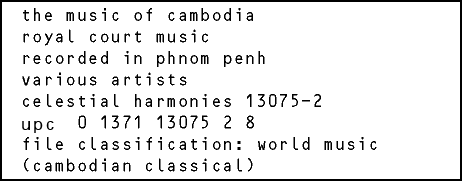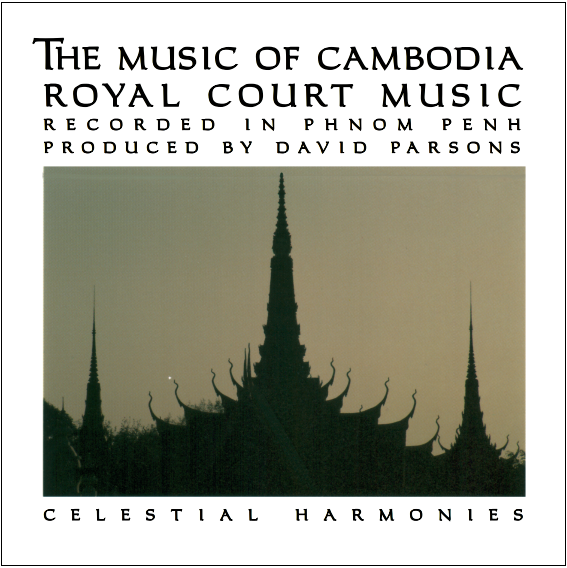 |
|||||||||||||||||||||||||||||||||||||||||||||||||||||||||||||||||||||||||||||||||||||||
 
the projectOn the walls of Angkor Wat, the famous bas–reliefs
show the instruments of the Khmer Imperial court of a thousand years
ago: double reeds, wooden xylophones played in pairs, unusual sets
of metal gongs placed in circular frames, and drums. Incredibly, these
instruments and much of the court music still survive today, despite
the decimation of Cambodian arts and culture during the Khmer Rouge
regime. This recording is the second in a three–volume series
that reveals the mysteries of Cambodian music to the outside world.
Following the rarely heard instruments and styles of the Angkor Wat
region in the first volume, this volume of The Music of Cambodia
series presents the beauty, refinement, and energy of the royal court
music.
Although there is no royal court in modern Cambodia, the Cambodian government has fought mightily to preserve its fragile links to the glories of the ancient Khmer Empire. The dance and music of the royal court are considered very important links, and this recording features some of the finest musicians still living in southeast Asia. In addition, The Music of Cambodia, Volume 2, includes the popular Cambodian music ensemble known as Mahori, the magical trance and possession music of the Memut, and some literally breath-taking solos for reed, wood flute, and buffalo horn. Recorded in Phnom Penh, this collection combines the authenticity of a field recording with the sonic excellence of a modern studio record. In one piece, the hazy shimmer of over-tones from the court ensemble's gong-chime instruments haunt the background of the performance, while the Cambodian oboe swirls atop a bed of precisely interlocking xylophone patterns. In another, the casting of a spell to ward off black magic is accompanied by the ever–accelerating rhythm of the trance music of the tribal Arak people. That these styles have survived is a tribute to the strength of Cambodian music. the artistsThe musicians of the royal court ensemble are perhaps
the finest professional musicians in Cambodia today. Often heard at
large festivals and on the radio, the mahori orchestra are among the
most popular musicians in Cambodia. Several of the members are virtuoso
performers on various Cambodian flutes and double-reeds, and appear
as soloists in The Music of Cambodia, Volume 3
(13076).
Producer David Parsons, from New Zealand, is a composer and synthesizer artist whose previous recordings (all available from Fortuna Records/Celestial Harmonies) have featured the sounds of Central Asia. He is also the producer of Sacred Ceremonies, Volumes 1 and 2 (17074) and 17079), the music of Tibetan Buddhism. tracklist
|
|||||||||||||||||||||||||||||||||||||||||||||||||||||||||||||||||||||||||||||||||||||||
|
|
|||||||||||||||||||||||||||||||||||||||||||||||||||||||||||||||||||||||||||||||||||||||
 |


